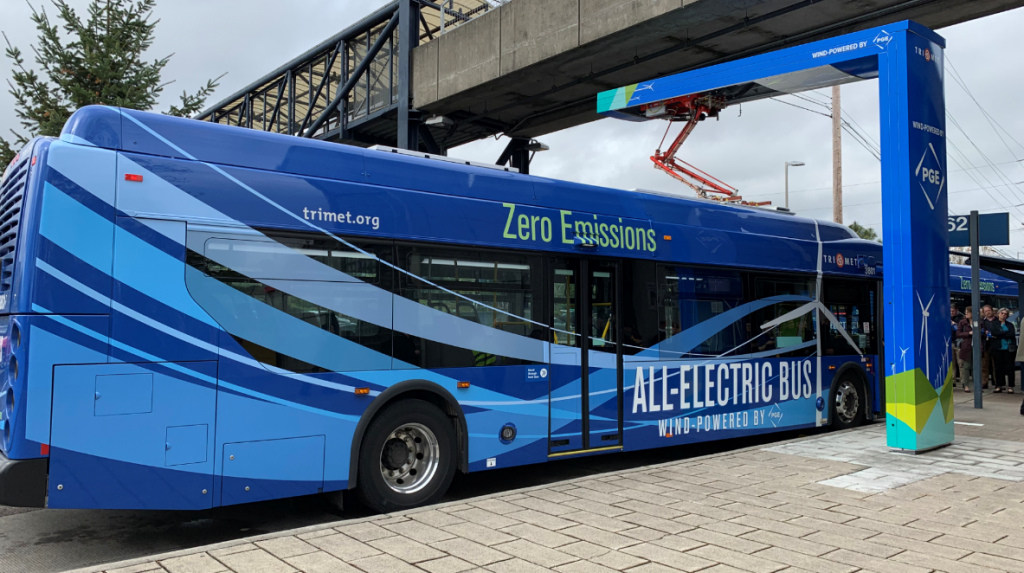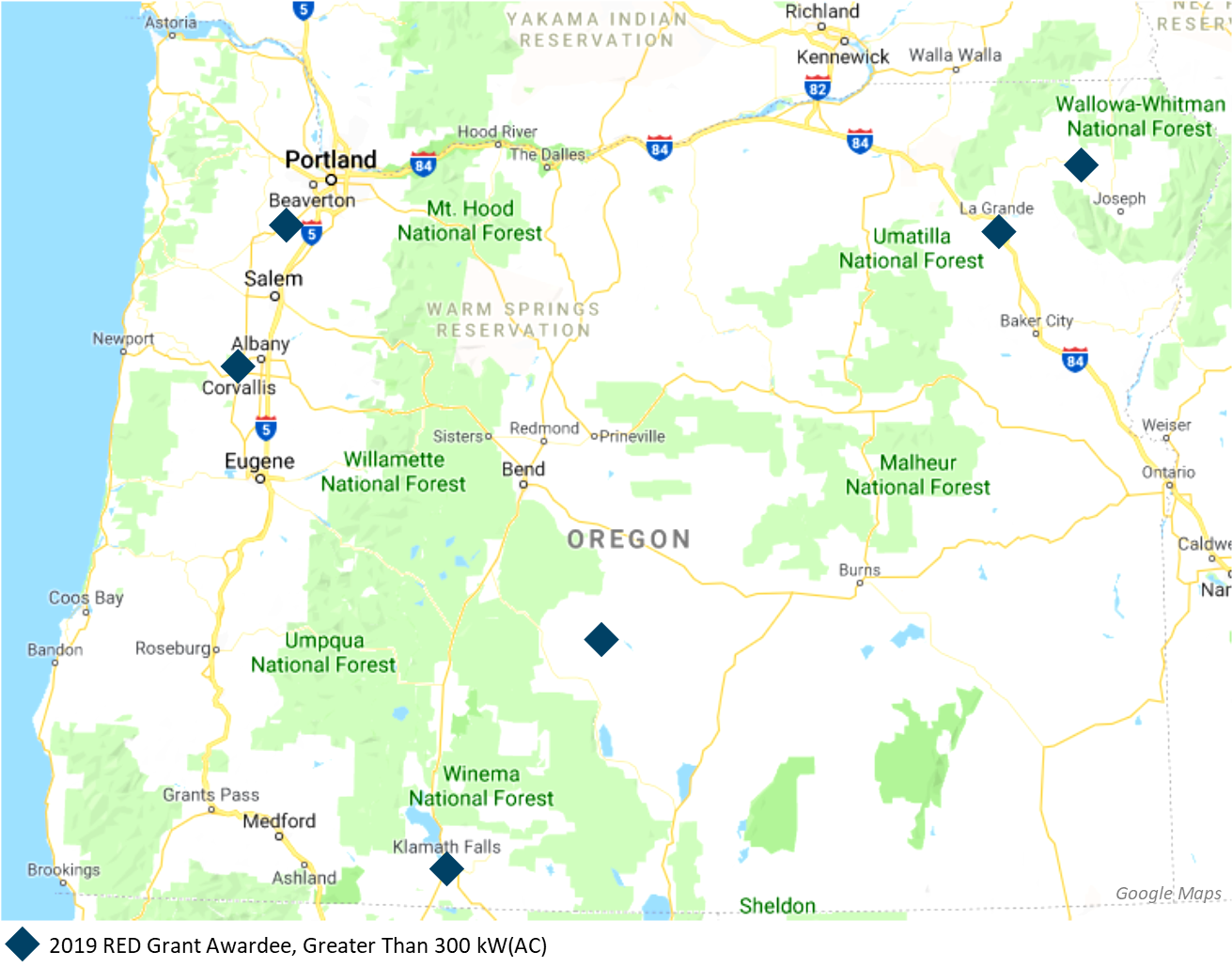July 2019 Newsletter
Session's Over. Here's What's Next
Oregon's 2019 legislative session ended June 30, 2019. Here are a few brief recaps and main takeaways from the new bills the Oregon Department of Energy is following as we begin the new biennium. For detailed information about bill language, visit the Oregon Legislature's website.
ODOE Budget: Senate Bill 5545 outlined our two-year agency budget. We're still reviewing the budget and what it will mean for our work and for the Energy Supplier Assessment.
Thermal Renewable Energy Certificates: SB 38, an ODOE bill, clarified language related to thermal renewable energy certificates and how they can be issued, transferred, and used under the state's Renewable Portfolio Standard.
Green Energy Technology: House Bill 2496 focused on the state's requirement for public agencies to include green energy investments in new or remodeled public buildings. Changes to the program include allowing battery storage when it is part of a system that generates electricity from on-site solar or geothermal resources. Additionally, the program will now allow public entities to meet their green energy requirements through energy reduction and efficiency efforts in certain situations.
Solar Rebate Program: HB 2618 creates a new $2 million rebate program for residential rooftop solar installations. The bill includes specific provisions to support solar PV projects for low- and moderate-income households. Look for the new program in early 2020.
Energy Facility Siting Jurisdiction: HB 2329 raises the threshold under which certain renewable energy projects are subject to state jurisdiction, effective January 1, 2020. The state's Energy Facility Siting Council provides state oversight of larger renewable energy projects; smaller projects are overseen by the county where the proposed project would be located. Under the new law, solar PV facilities on high value farmland that are less than or equal to 160 acres will now be subject to county jurisdiction. The same is true for solar PV facilities on cultivated land or land with specific soil classifications that are less than or equal to 1,280 acres (two square miles) and for solar PV facilities on other land that are less than or equal to 1,920 acres (three square miles). The threshold for wind facilities to be reviewed at the state level was changed to 150 MW peak capacity, up from 105 MW peak capacity, and for geothermal facilities, it was changed to 55 MW peak capacity, up from 38.5 MW peak capacity.
Zero Emission Vehicles: details below!
Spotlight on Zero Emission Vehicle Bill
Another outcome from this year's legislative session was Senate Bill 1044, recently signed into law by Governor Brown. The bill marks another step forward for Oregon’s climate goals and for reducing greenhouse gas emissions from the transportation sector.
More than a third of Oregon’s greenhouse gas emissions come from transportation, with a majority coming from passenger cars and trucks. ZEVs – which include battery electric, plug-in hybrid electric, and hydrogen fuel cell vehicles – have no tailpipe emissions.
The new law establishes targets for ZEV adoption in Oregon, aiming for at least 50,000 registered ZEVs by the end of 2020 and 250,000 by 2025. By 2035, we hope to see ZEVs representing at least 90 percent of new vehicle sales. The Oregon Department of Energy is tasked with monitoring these ZEV adoption goals and, if the state is not on target, recommending strategies to the Legislature to bolster ZEV adoption.
The law also requires that all light-duty vehicles owned or leased by the State of Oregon be ZEVs by 2029, and it gives Oregon’s schools the option to use public purpose charge funds to buy electric buses and charging stations.
As we help implement the new law, we'll continue promoting ZEVs to Oregonians. We have plenty to tout, including an average annual savings of about $850 in fuel costs per year, reduced maintenance costs, and potentially lower up-front costs than comparable combustion-engine vehicles due to state, local, and federal tax incentives. Most electric vehicles built today can drive between 150 and 240 miles on a single charge and are supported by hundreds of fast-charging stations throughout the state.
Learn more about electric vehicles at Go Electric Oregon, including available incentives from your local utility, the Department of Environmental Quality’s Oregon Clean Vehicle Rebate Program, and more.
Clean Energy Keeps the Wheels On The Bus Going Round
TriMet has been in the news of late thanks to new electric buses they've added to their fleet. But the regional transit agency has been incorporating clean fuels and other sustainability measures into their work for years. On the latest episode of our Grounded podcast, we caught up with Tia York, Public Information Officer, to discuss TriMet's efforts to reduce emissions from their transportation services and hear what's on the horizon for their riders. Give it a listen!
First Round of Renewable Energy Development Grants Announced
ODOE's Renewable Energy Development Grant program supports new energy development across the state. We award grants in two tiers – for large and small projects – and we were pleased to announce the large grant awardees last week. Get all the details on our blog, and look for an announcement with small project awardees in August.
Resilience Guidebook Now Available Statewide
We teased our new guidebook for small and medium-sized electric utilities in last month's newsletter. We're pleased to report it's now live on our website for everyone to read and use. Please help us spread the word!
And remember: just because the guidebook is officially published doesn't mean we can't make changes and additions, especially to stories from utilities taking action on resilience and readiness. Check out what utilities across Oregon are already doing to make their communities more resilient, and share the latest from your utility with our team.
Reports From Around the Agency
We recently heard from several Oregonians about solicitations they'd received for solar panel cleaning services. Contrary to language in the solicitation letter, the Oregon Department of Energy did not endorse the company reaching out to people. Full details on our blog.
Adam Schultz, ODOE senior policy analyst, is traveling across Oregon this summer visiting COUs. Conversations so far have focused on our new resilience guidebook, spill and other management issues on the Columbia River, and consideration of general power market changes and the effects on BPA and COUs. If you haven’t met with Adam yet, look for an invitation with proposed meeting dates soon.
More than 300 people attended recent public hearings for the proposed Boardman to Hemingway Transmission line. The hearings got attention from local news, and the project is expected to be featured in the September issue of 1859 magazine. We welcome the interest in this large, complex project and the role it may play in Oregon. Stay tuned for details on when the Energy Facility Siting Council takes up discussion on this project at a future meeting.
The effects and importance of wind energy made the cover of Capital Press earlier this month in an article that was also printed in the East Oregonian. ODOE Director Janine Benner and Todd Cornett, Assistant Director for Energy Facility Siting, were interviewed for the article, which also featured people from across eastern Oregon talking about the changes renewable energy has brought to their communities.
Our Energy Advisory Work Group met earlier this week in Salem. The group discussed many of the topics covered in this newsletter, including legislation that ODOE will help implement over the next year. The group also discussed next steps for ODOE's strategic planning effort. Read more about the overall goals for this effort on the EAWG meetings page, and stay tuned for ways you can be involved.
The Federal Energy Regulatory Commission's public comment period on the Draft Environmental Impact Statement for the proposed Jordan Cove liquefied natural gas facility in Coos Bay closed July 5. Oregon state agencies submitted comments for FERC's review. You can read our comments and follow the State of Oregon's process on our Jordan Cove dashboard.
There's still time for you to weigh in on Energy Trust's draft 2020-2024 Strategic Plan. Feedback is accepted through August 2 via the Energy Trust’s website.
As we noted last month, the Public Utility Commission of Oregon is partnering with other west coast utility commissions to host a Wildfire Risk Dialogue at the Oregon Convention Center from 9 a.m. to 4:30 p.m. on August 16, 2019. Register to attend.
UPCOMING MEETINGS
Energy Facility Siting Council | August 22-23 | Boardman
Rulemaking
Sign up to receive this newsletter by email.




